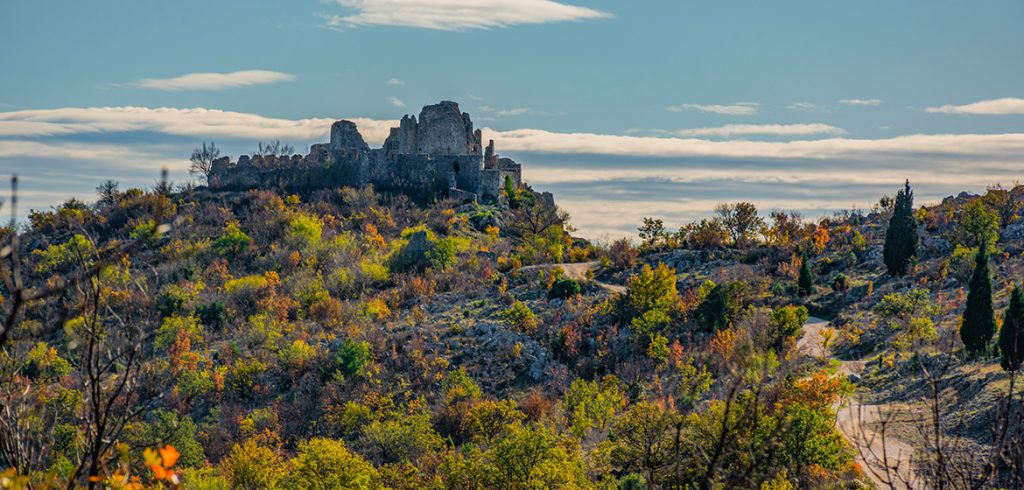The fortress was built in the Middle Ages, above Ljubuški, at the very top of the Butorovica hill. According to folk tales, herceg (duke) Stjepan Vukčić Kosača is responsible for the construction of the fortress, although historically it is older than him. In written sources Ljubuški is first mentioned on February 21, 1444 under the name Lubussa.
The fortress complex consists of two parts. The central tower “Herceguša” was built at the end of the 14th or beginning of the 15th century and the perimeter wall in the form of an irregular polygon with massive towers was built in the Ottoman period after 1472. THE OLD TOWN OF LJUBUŠKI was declared a National Monument of Bosnia and Herzegovina in October 2003.
Shortly before 1477, the city fell into Turkish hands and became a frontier fortress with a strong garrison. The Turks converted the fortress into a military residence, with all the accompanying facilities. After 1835 the Ljubuški fortress lost its defensive and strategic role.

History of the Herceg Stjepan fortress
The late medieval fortification of the feudal ruler of herceg Stjepan Kosaca is the most monumental archeological site of the Ljubuški Municipality, located on the prominent top of the karst chain of Buturovica hill (396 m above sea level) and as such is a symbol of the town of Ljubuški and Herzegovina. The fort complex consists of two parts. The central tower of the rectangular shape, popularly called “Herceguša”, built in the late 14th or early 15th centuries and a perimeter wall in the shape of an irregular polygon with massive towers, dating from the Ottoman period after 1472. The complex covers an area of 3,350 m2 and consists of several units, such as a small and large steeple with a table and various buildings; guardhouse, granary, bakery, armory, gunpowder and 4 water tanks. The medieval suburb developed on the terrace of Crkvice, at the bottom of the southern part of the town. Not far from the entrance (about 250m north-west) into the fort are the ruins of a mosque from the mid-16th century. Ljubuski is mentioned for the first time in historical sources on February 15, 1435 under the name Lubussa. The city was conquered for the first time by the Ottoman authorities in 1463, and finally in 1477 when it was mentioned in the defter of the Herzegovina Sandžak. In the foundation of Nesuh-aga Vučjaković in 1565, the city is referred to as the “Kala Lupuška” (Ljubuški Fortress). During the 17th century, Ljubuški became the center of the „Kadiluk“, and finally left in 1835 after losing its defensive and strategic purpose.
During the 17th century, Dubrovnik masters renovated these walls for the first time. Unfortunately, due to the seismic effect and weathering during the 20th century, this fort was significantly damaged. By the decision of the Commission to Preserve National Monuments of Bosnia and Herzegovina, the architectural ensemble of STARI GRAD IN LJUBUŠKI was declared in October 2003 a national monument of Bosnia and Herzegovina.
Do you want to experience Herceg Stjepan fortress firsthand, enjoy stunning nature, picturesque views on the city of Ljubuški, and learn all about its rich history? Contact us.
We will create a journey tailored to your preferences.

